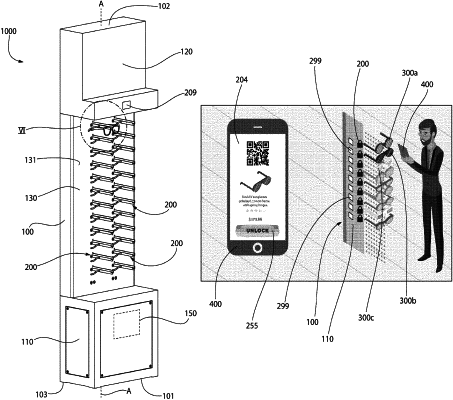| CPC G07C 9/00896 (2013.01) [G07C 9/00309 (2013.01); G07C 2009/00539 (2013.01); G07C 2009/00769 (2013.01)] | 20 Claims |

|
1. A retail security system comprising:
a locking system comprising:
a stand extending from a bottom end to a top end along a longitudinal axis and comprising a base portion configured to rest atop of a floor of a retail space and a support portion extending from the base portion in a direction of the longitudinal axis;
a plurality of locking assemblies located along the support portion of the stand, each of the locking assemblies configured to hold an article for sale, each of the locking assemblies independently alterable between a locked state whereby the article cannot be removed from the locking assembly and an unlocked state whereby the article can be removed from the locking assembly; and
a wireless communication module;
a portable electronic device carried by a user and comprising a wireless communication module; and
wherein upon wireless communication being established between the portable electronic device and the locking system and the user being authenticated, the portable electronic device is configured to transmit instructions to the locking system to cause the locking system to alter at least one of the plurality of locking assemblies from the locked state to the unlocked state so that the user can interact with the article being held by the at least one of the plurality of locking assemblies.
|